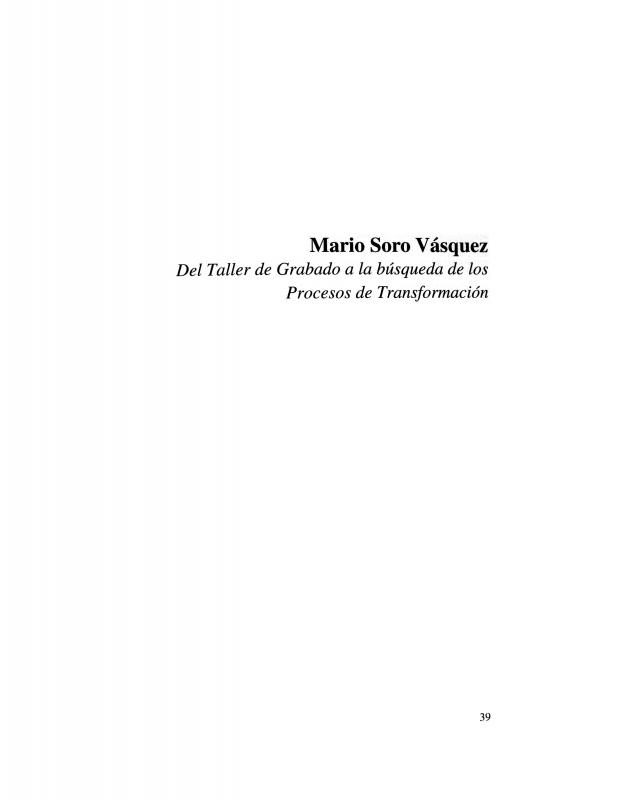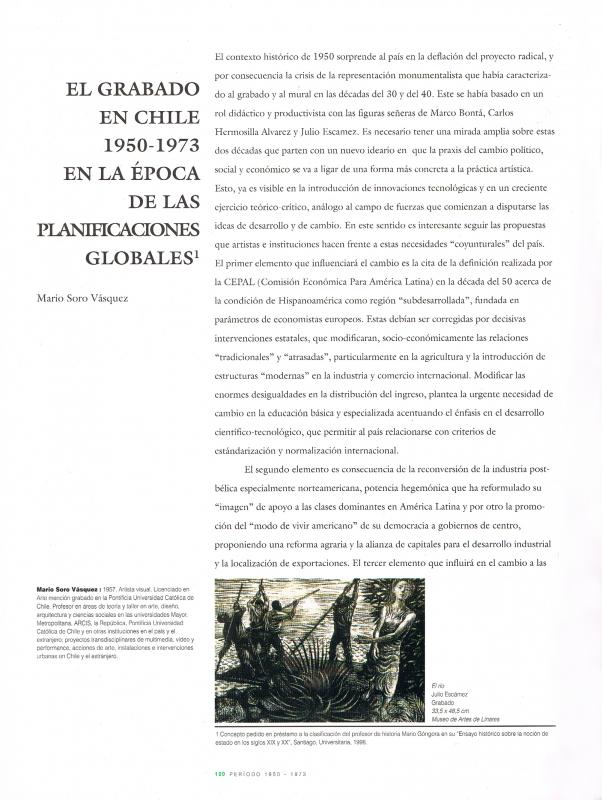This text, by the writer and theorist Federico Galende (b. 1965), about the artistic intervention created by Mario Soro (b. 1957), was part of the Lugar ideal project conceived and organized by ARCIS (Escuela de Artes de la Universidad de Artes y Ciencias Sociales, 1982–2017). Several theorists and artists, who were teachers at the school at the time, were involved in the project. In late 1996 and early 1997 the artists created the intervention on the façade of the university located in downtown Santiago (Huérfanos, 1721). The other participants in the event, apart from Soro, were Virginia Errázuriz (b. 1941), Francisco Sanfuentes (b. 1954), Fernando Undurraga (1946–2019), Hugo Rivera (b. 1943), and Pablo Langlois (b. 1964).
Universities in Chile are the main providers of art instruction, and working artists tend to have teaching duties on campus, a practice that contributes to the unique character of each school. Francisco Brugnoli (b. 1935) founded ARCIS in the early 1980s; the school opened in 1982 and was opposed to the civilian-military dictatorship that was in power in Chile at the time (1973–90).
A specialist in printmaking, Mario Soro studied art at the Escuela de Artes de la Pontificia Universidad Católica. He wanted to explore a range of different supports and, in 1981, filled the school patio with one hundred crosses made of plaster. He added an animita, a form of street memorial to the deceased, and images of anonymous people, turning the patio into a pantheon. The art historians Milan Ivelic (b. 1935) and Gaspar Galaz (b. 1941) applauded the intervention since art instruction was quite traditional at the time and eschewed experimentation. Ever since then, the bulk of Soro’s work has been created for public spaces. He produced “Sindicato de héroes. El des(plaza)miento de los desplazados” in 2014. This project arose from a demonstration organized by STIDNA (Sindicato de Trabajadores Independientes Discapacitados “Nuevo Amanecer”), the handicapped workers’ union that was protesting the revocation of their work permits to operate as street peddlers on the outskirts of the Municipality of Santiago. Soro decided to post silhouettes of the peddlers on the panels erected during the refurbishing of the Plaza de Armas (in front of the municipality building). He enlisted the aid of ARCIS students to make prints of the disabled bodies and the equipment they needed to move around. Photos of the action and protest banners were hung in neighboring store windows (Proyecto Galería Temporal). Soro has claimed that “displacement” and “emplacement” are concepts that are essential to the understanding of his work, which includes performance and audiovisual components. [For more information about Soro’s ideas, see the following in the ICAA Digital Archive: “Del taller de grabado a la búsqueda de los procesos” (doc. no. 745031) and “El grabado en Chile 1950–1973 en la época de las planificaciones globales” (doc. no. 767226), both of which were written by the artist.]


